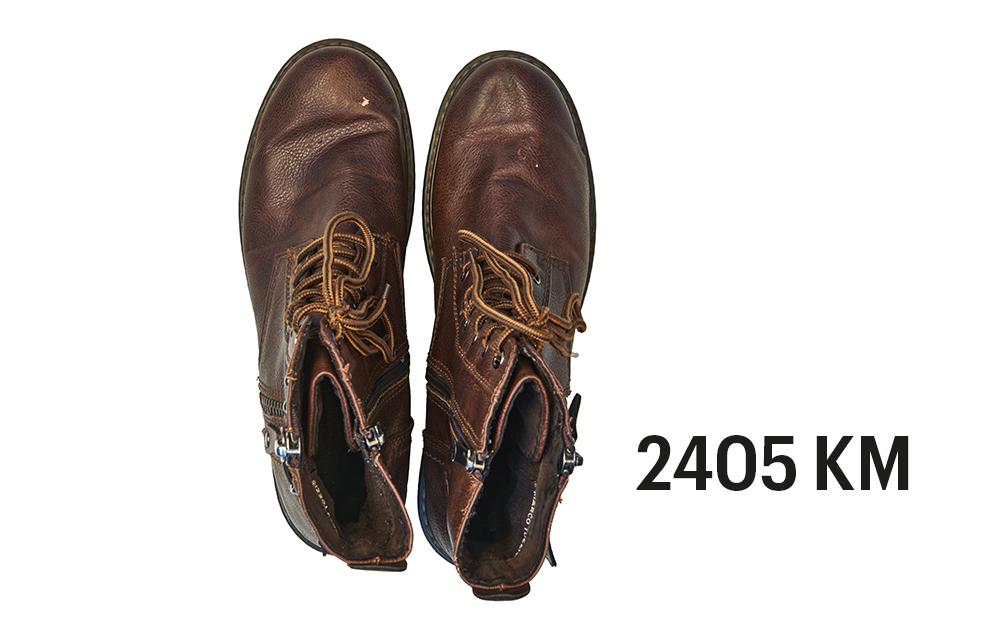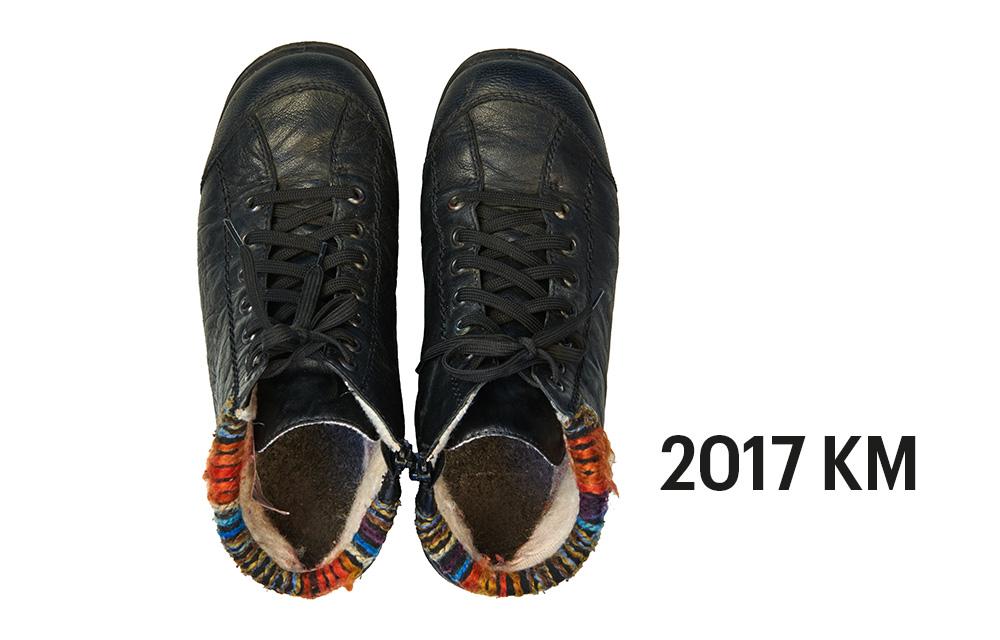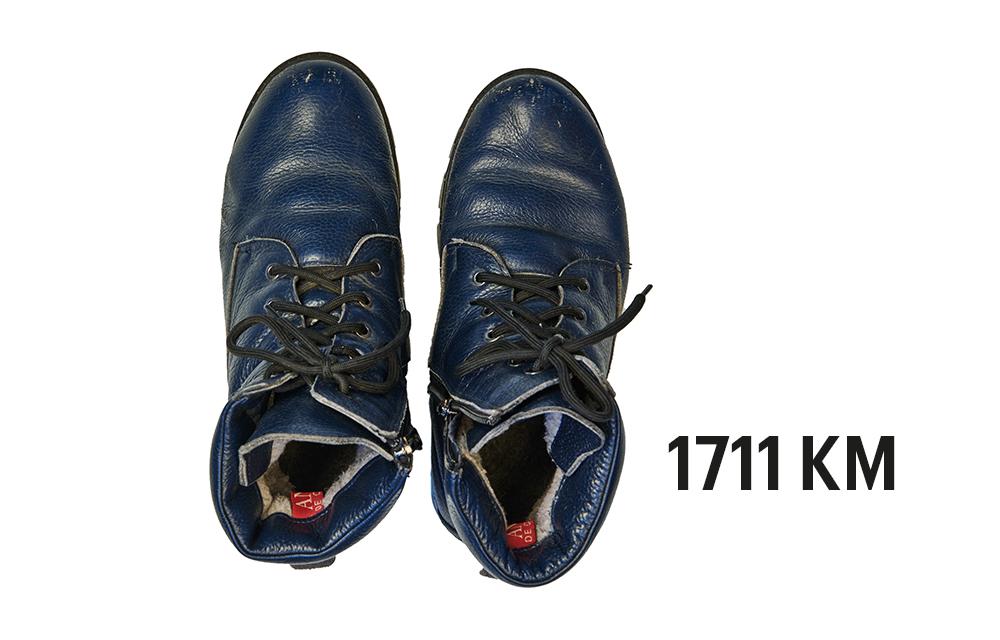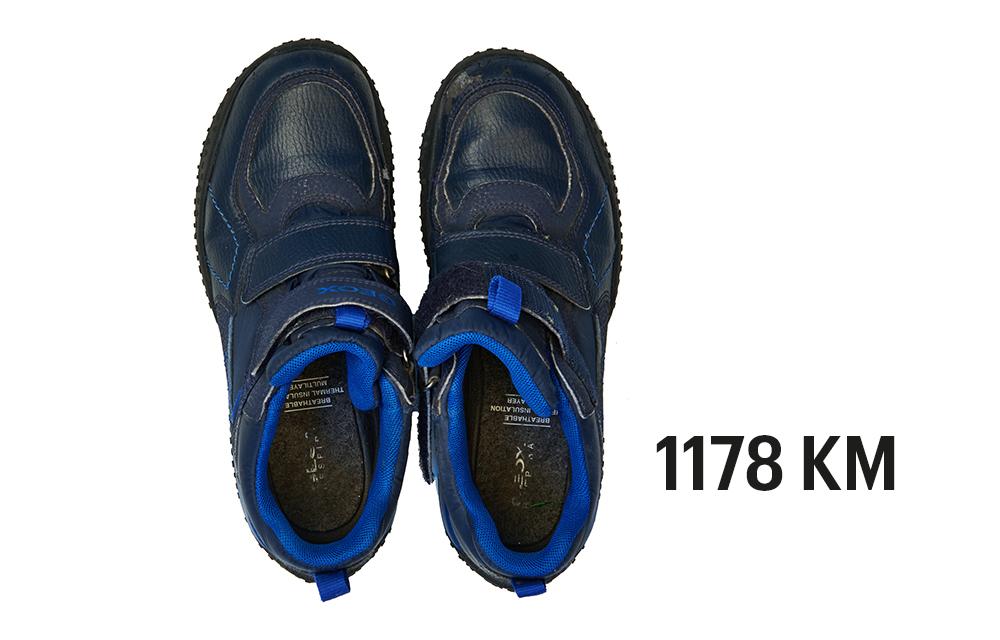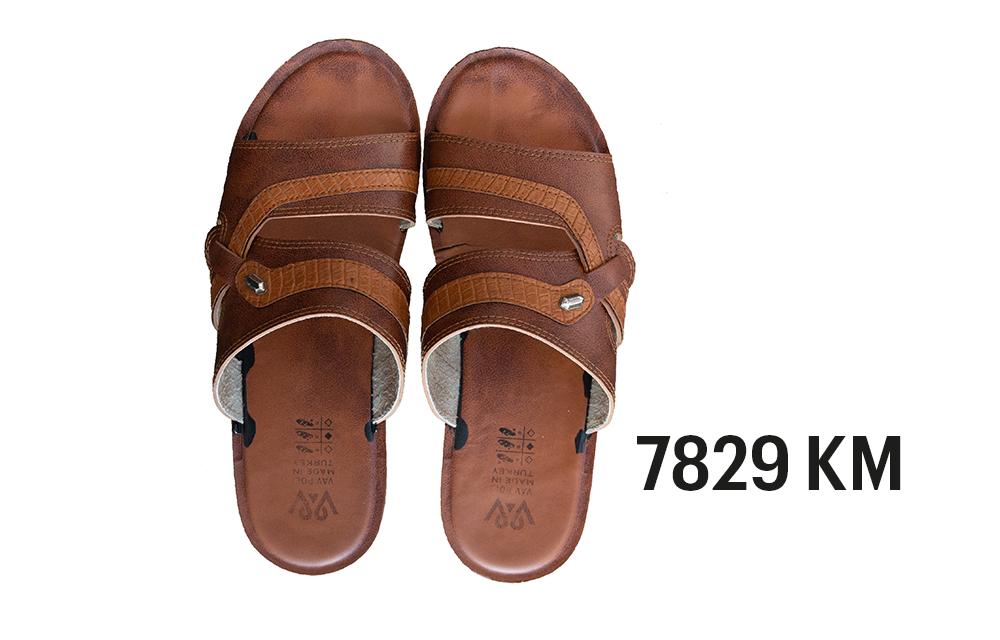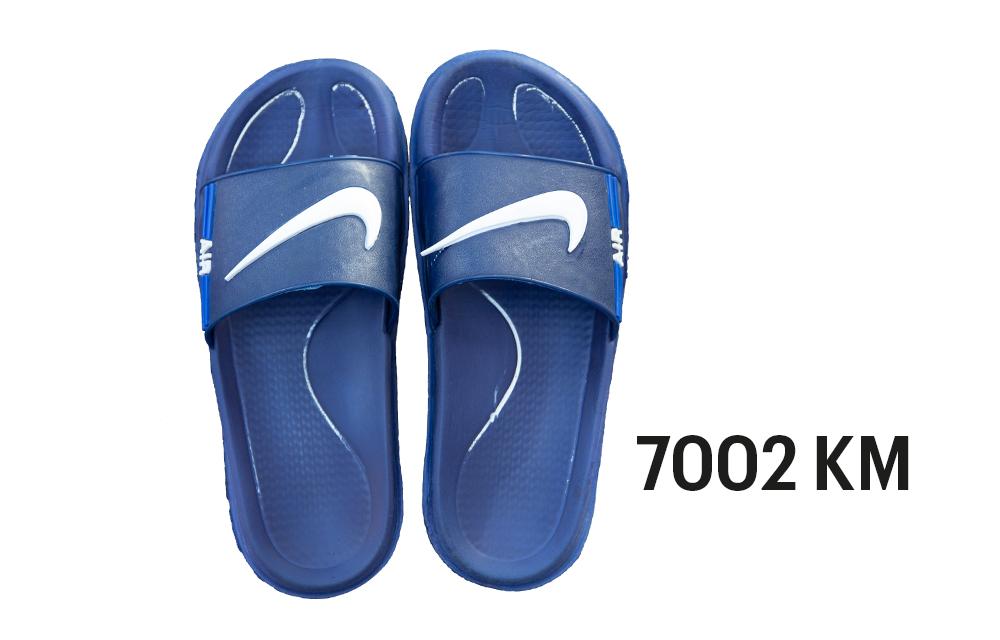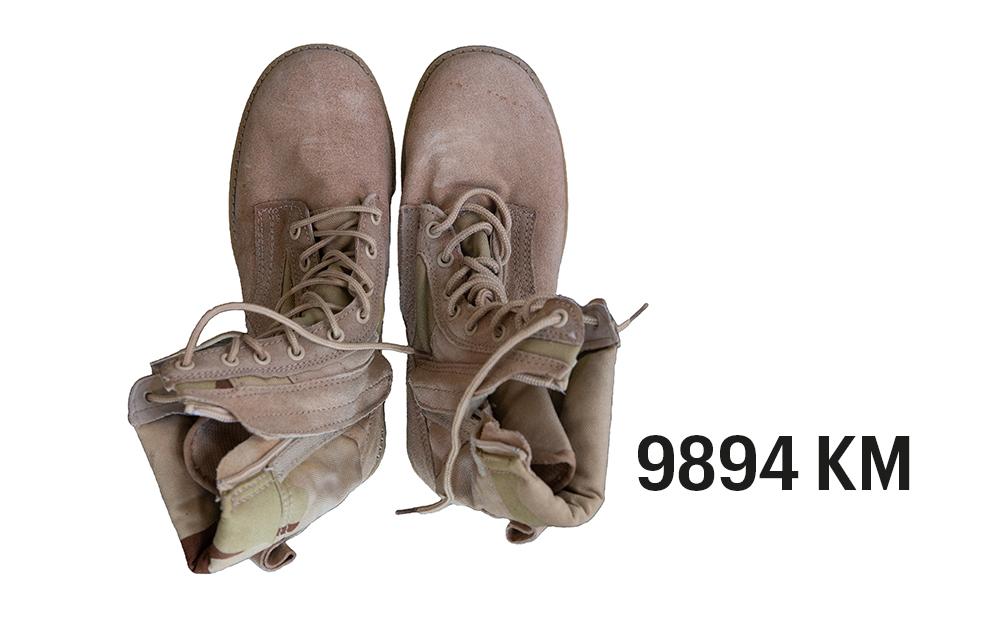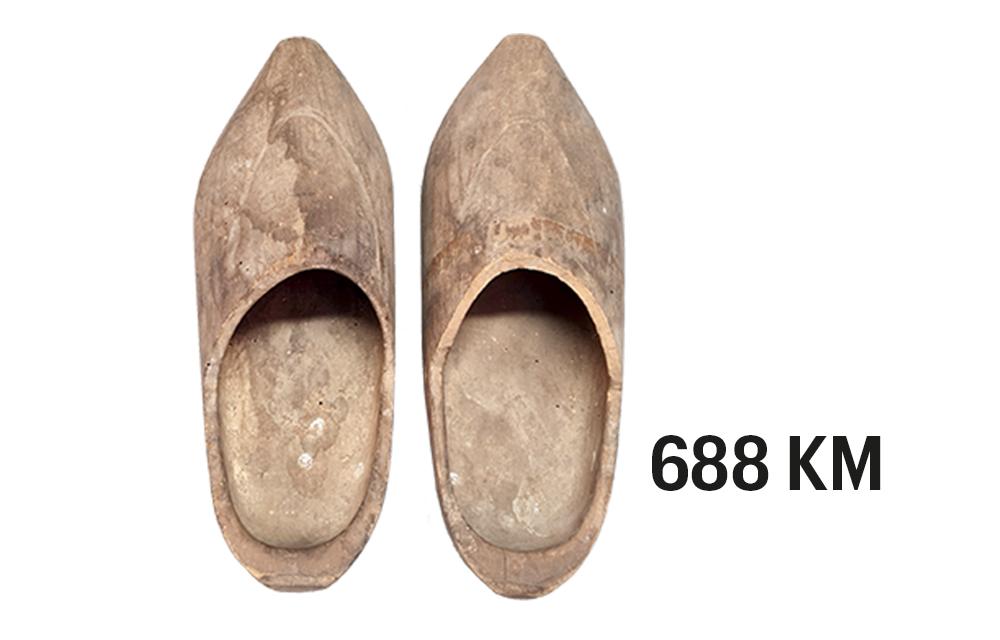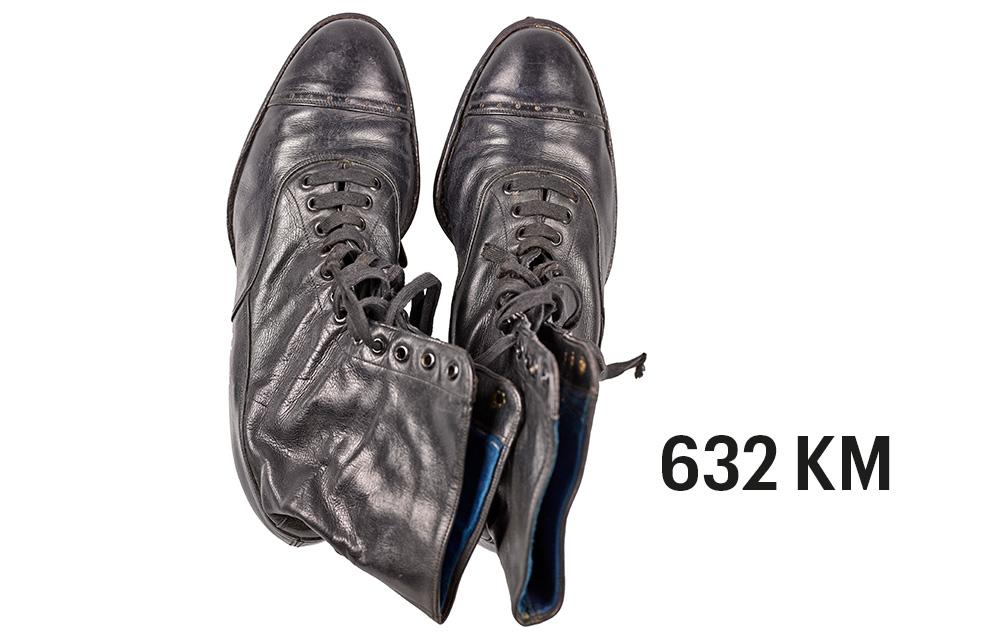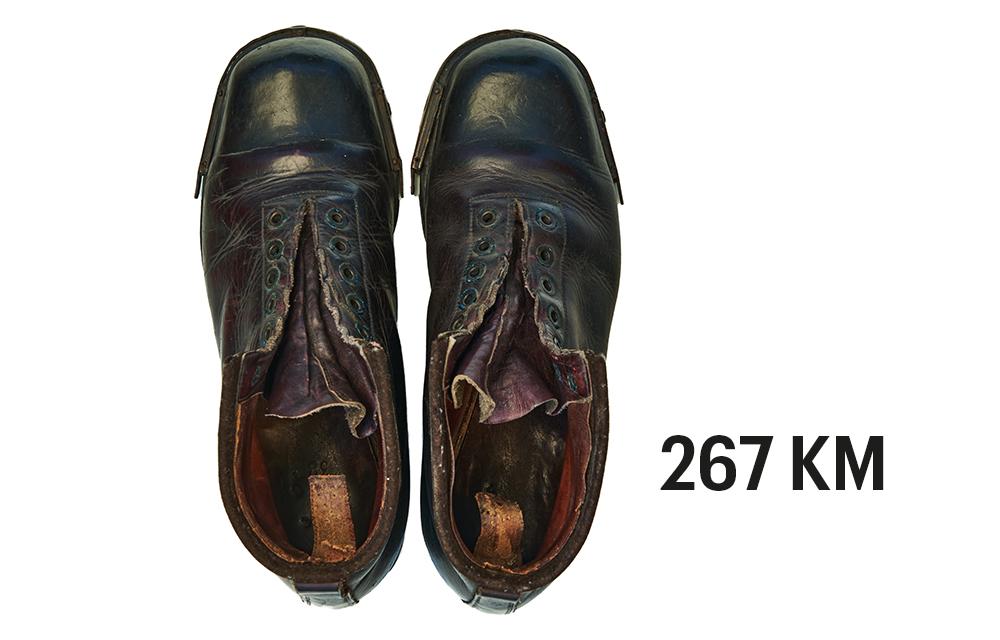Routes Across the Mediterranean Sea
The shoes pictured here are from refugees rescued from a wooden boat en route from Libya to Italy from the Mediterranean Sea on 22 October 2022 by the HUMANITY 1, a sea rescue ship operated by the German civil society organisation SOS HUMANITY.
The route across the Mediterranean is one of the most dangerous routes from the world's crisis regions to Europe. Every year, thousands of people drown or go missing on this route; an exact number cannot be determined. This year, the official number of people who have drowned while fleeing across the Mediterranean has already reached 2000.
After many thousands of kilometres and experiences of hunger and violence, the route across the sea is often the only way out for many refugees and migrants. It is precisely from Libya that most are fleeing to escape the violence and arbitrary internment in Libyan camps. The people put themselves in the hands of smugglers who transport them from Turkey to Greece or from North Africa to Italy and Spain on inflatable boats that are usually unseaworthy.
Most people have to leave their shoes behind before they get on the rigid-inflatable boats. The danger is great that the boat will be damaged by footwear and sink. The people are directly exposed to wind, water and freezing cold on their journey, which often takes several days.
Even after the rescue, the situation of the people remains difficult: the ships of the sea rescue are often denied landing in European ports. The refugees are then often housed in overcrowded camps and shelters for a long time and receive insufficient food.

